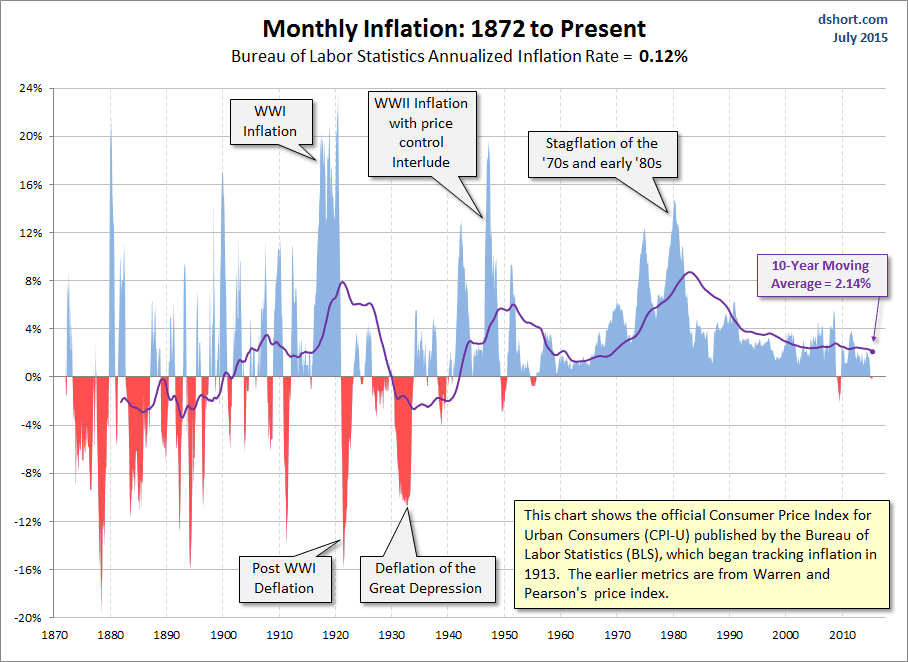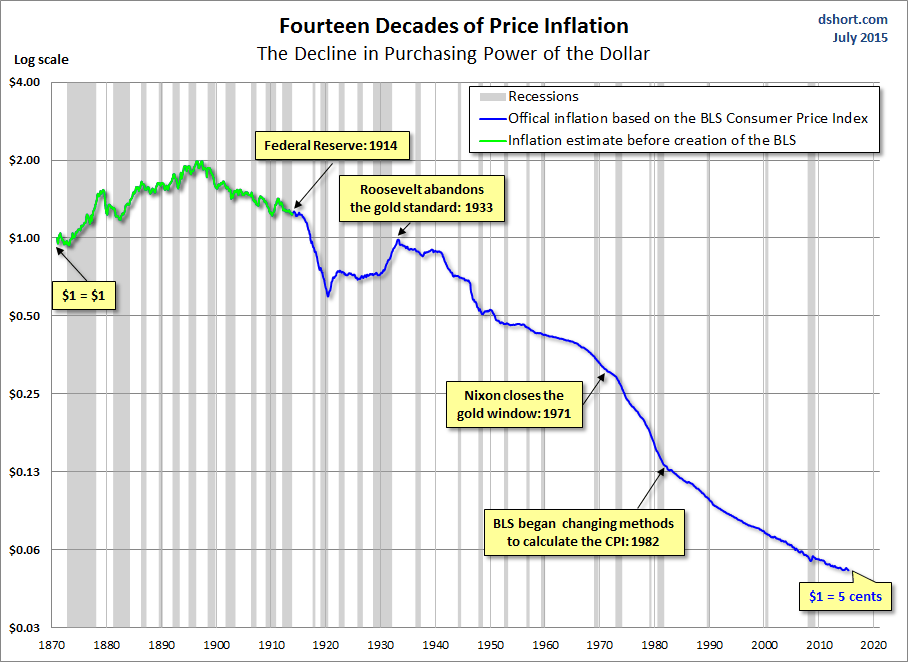The Consumer Price Index for Urban Consumers (CPI-U) released Friday morning puts the year-over-year inflation rate at 0.12%. It is substantially below the 3.83% average since the end of the Second World War and its 10-year moving average, now at 2.14%.
For a comparison of headline inflation with core inflation, which is based on the CPI excluding food and energy, see this monthly feature.
For better understanding of how CPI is measured and how it impacts your household, see our Inside Look at CPI components.
For an even closer look at how the components are behaving, see this X-Ray View of the data for the past six months.
The Bureau of Labor Statistics (BLS) has compiled CPI data since 1913, and numbers are conveniently available from the FRED repository (here). Our long-term inflation charts reach back to 1872 by adding Warren and Pearson's price index for the earlier years. The spliced series is available at Yale Professor (and Nobel laureate) Robert Shiller's website. This look further back into the past dramatically illustrates the extreme oscillation between inflation and deflation during the first 70 years of our timeline. Click here for additional perspectives on inflation and the shrinking value of the dollar.

For a long-term look at the impact of inflation on the purchasing power of the dollar, check out this log-scale snapshot of fourteen-plus decades.

Which stock should you buy in your very next trade?
AI computing powers are changing the stock market. Investing.com's ProPicks AI includes 6 winning stock portfolios chosen by our advanced AI. In 2024 alone, ProPicks AI identified 2 stocks that surged over 150%, 4 additional stocks that leaped over 30%, and 3 more that climbed over 25%. Which stock will be the next to soar?
Unlock ProPicks AI